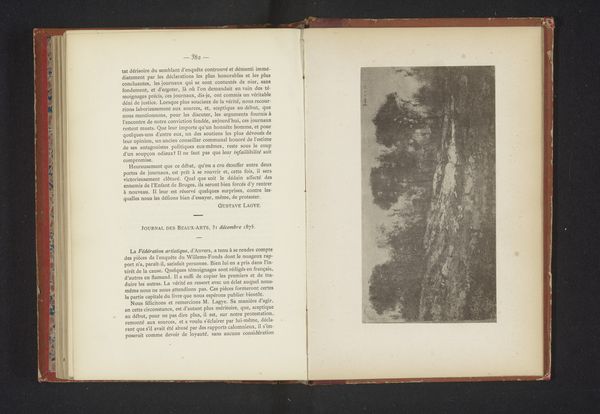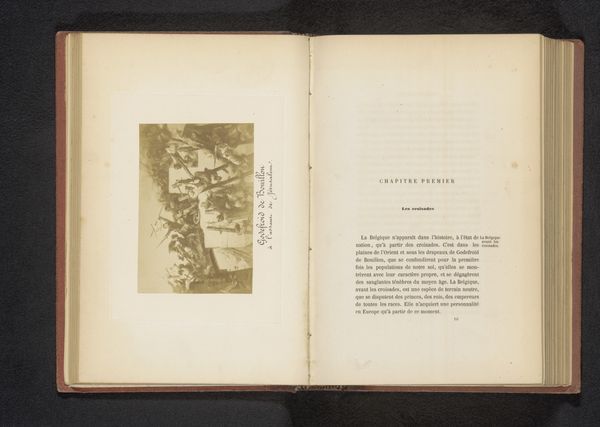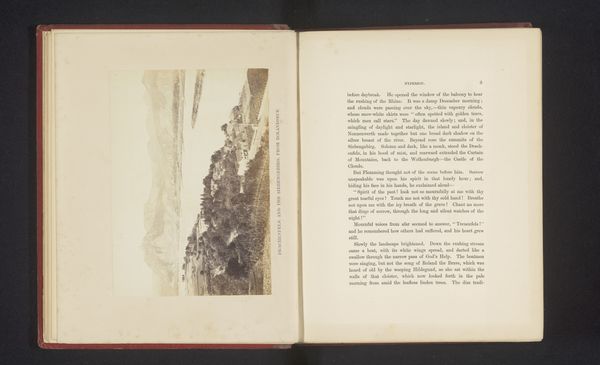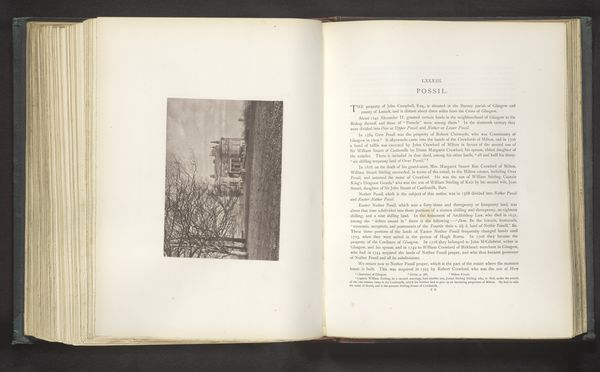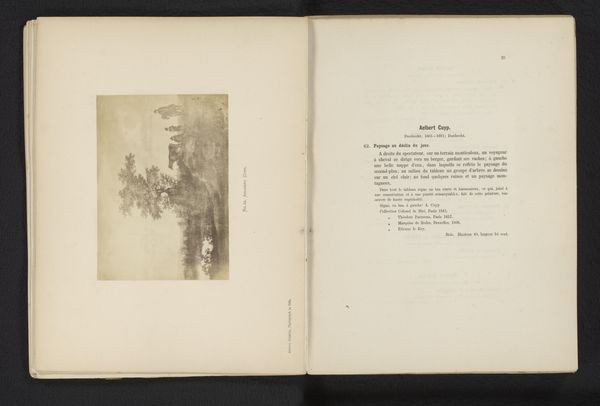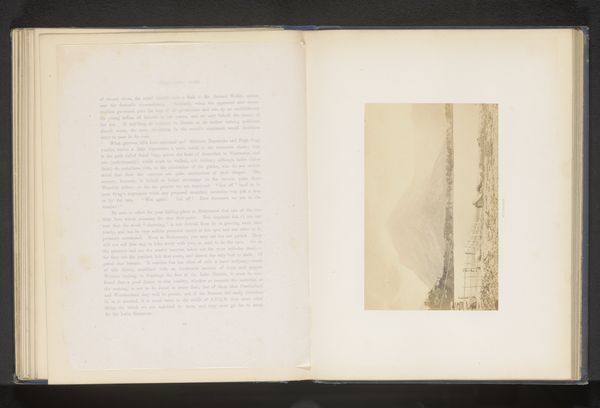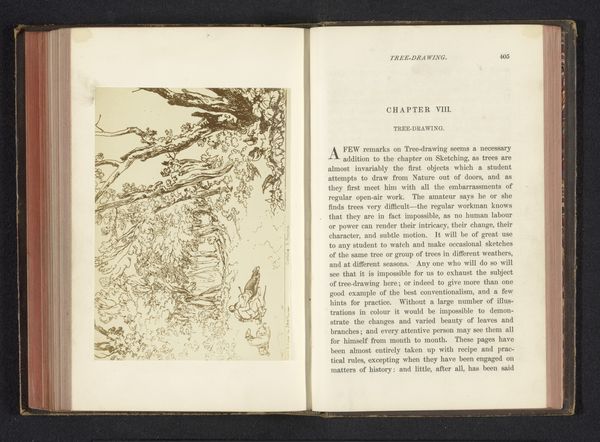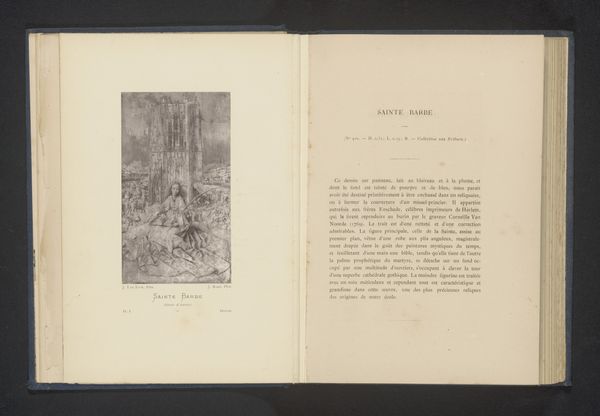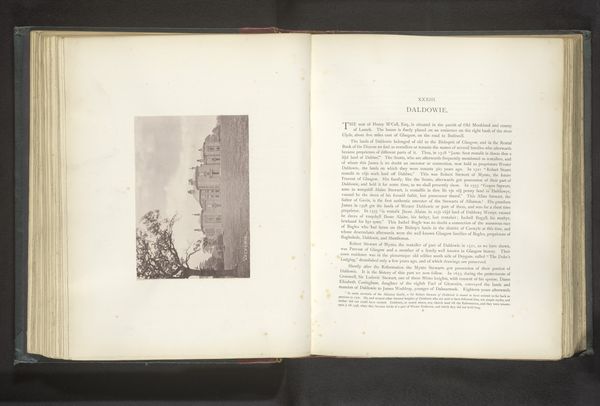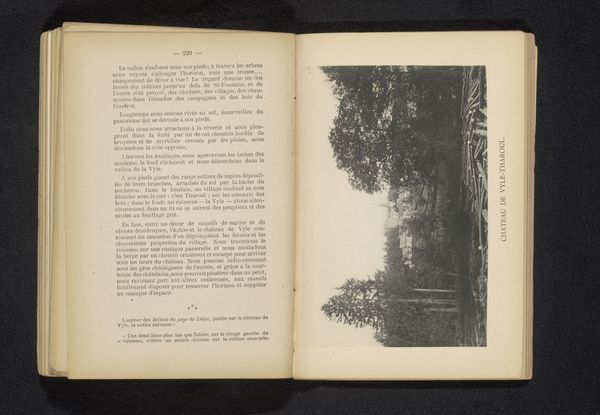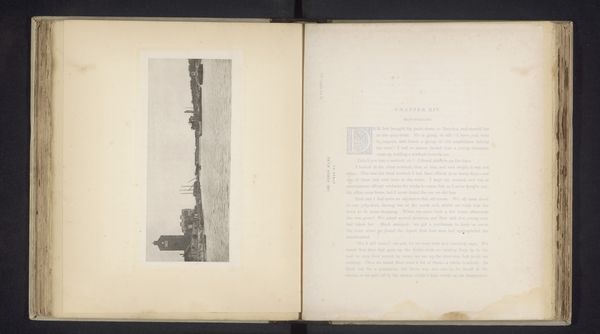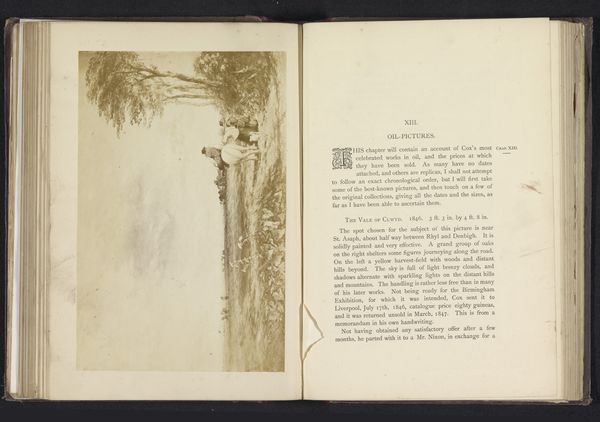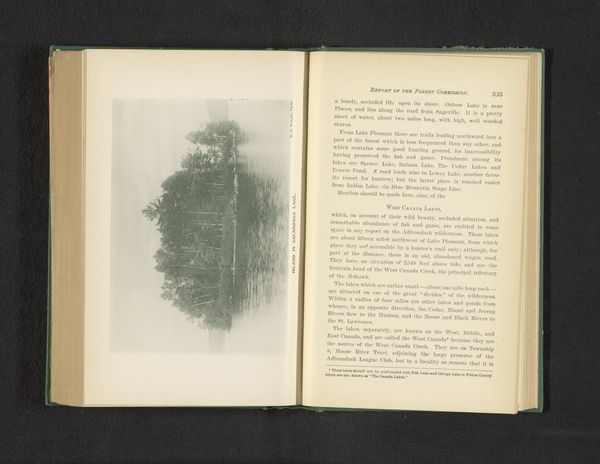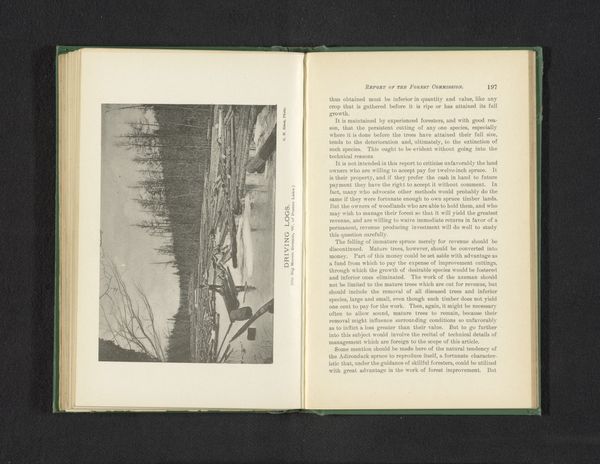
drawing, print, paper, ink
#
tree
#
drawing
# print
#
landscape
#
paper
#
ink
#
watercolor
Dimensions: height 122 mm, width 174 mm
Copyright: Rijks Museum: Open Domain
Curator: Here we have what’s listed as “Reproductie van een ontwerp van een landschap door Frans Lauwers,” dating to before 1893. It seems to be an ink drawing, perhaps a print reproduced on paper. The subdued tonality projects a certain somber mood upon first viewing. Editor: Yes, an austere scene, composed with rigorous lines and contrast that seem intended to create that effect. Notice how the vertical thrust of the tall, bare trees and the muted shades emphasize the lack of dynamism. It draws one in while projecting stillness. I'm curious about the paper and the inks, as they create an aesthetic here that leans towards something crafted. Curator: I appreciate that point. The lack of detail beyond the strong line work is precisely the key here, however. The artist makes conscious choices in deploying visual elements. Consider how the density of lines used to render the foliage creates the textural interest to guide the eye across the composition. It exemplifies restraint, yes, but formal restraint as a compositional element. Editor: The process itself might speak to that restraint, wouldn't you agree? A print suggests duplication, industrialization… perhaps the intent was mass consumption? And yet the apparent skill in execution lends it a degree of what we might term "artisan" value that pushes it above mere craft. It is caught somewhere in a negotiation between art and manufacture. This negotiation becomes quite a focus within Materialist artistic studies. Curator: Precisely, this contradiction underscores Lauwers' artistic insight: creating subtle tension through these seemingly straightforward juxtapositions. To see this reflected and emphasized makes it more intriguing. Editor: For me, looking closely at how it seems printed—the very physical application of ink, is perhaps what adds value to it. This is an era defined by how industrial production informs individual pieces of work like this. In a sense, its value, to me, lies there, the artist making something precious through the very means of mechanized creation. Curator: Well, its starkness resonates even beyond such a discussion, speaking volumes through a structured, intentional language of visual art. Editor: Indeed, whether we discuss value through artistry, production or technique, its appeal clearly exists.
Comments
No comments
Be the first to comment and join the conversation on the ultimate creative platform.
